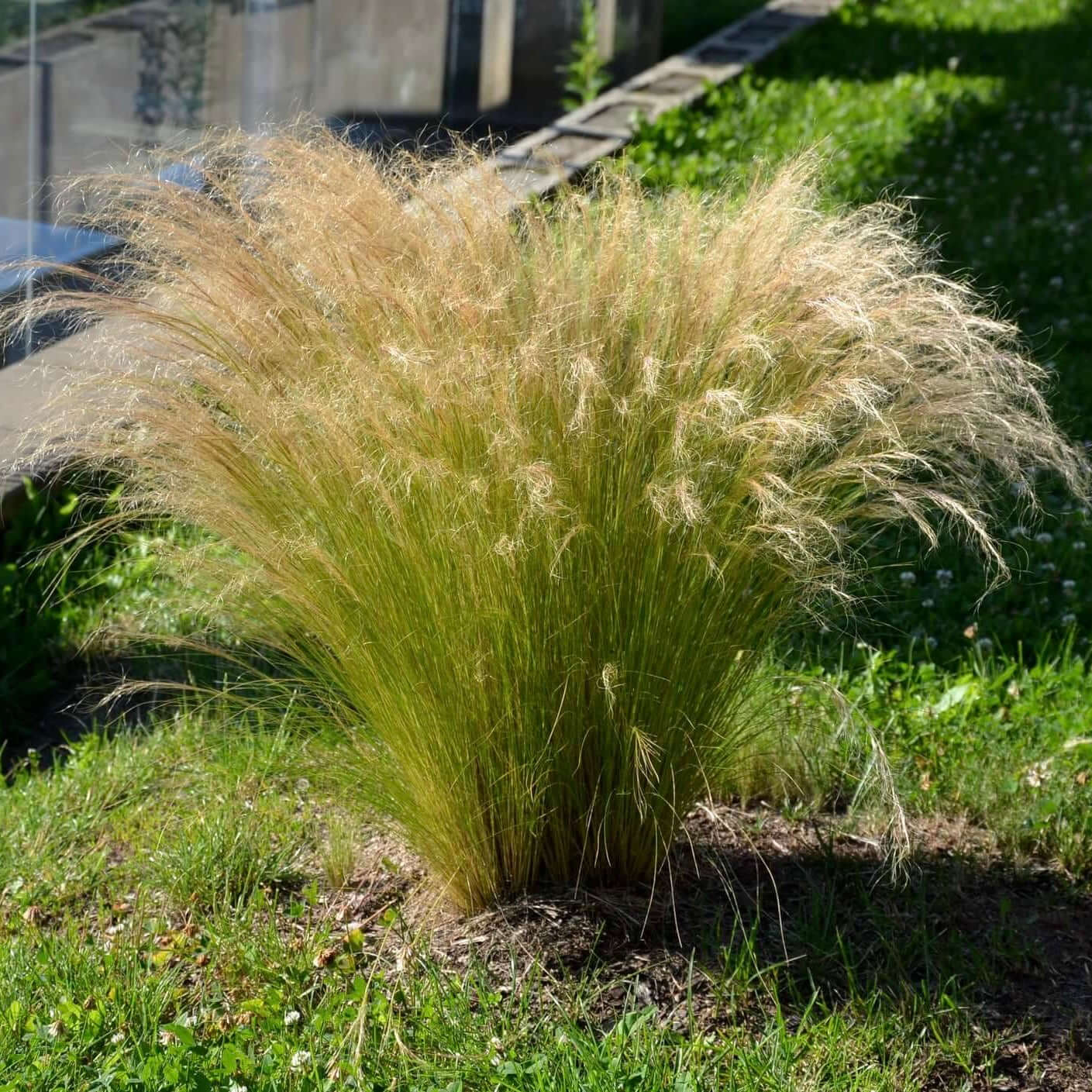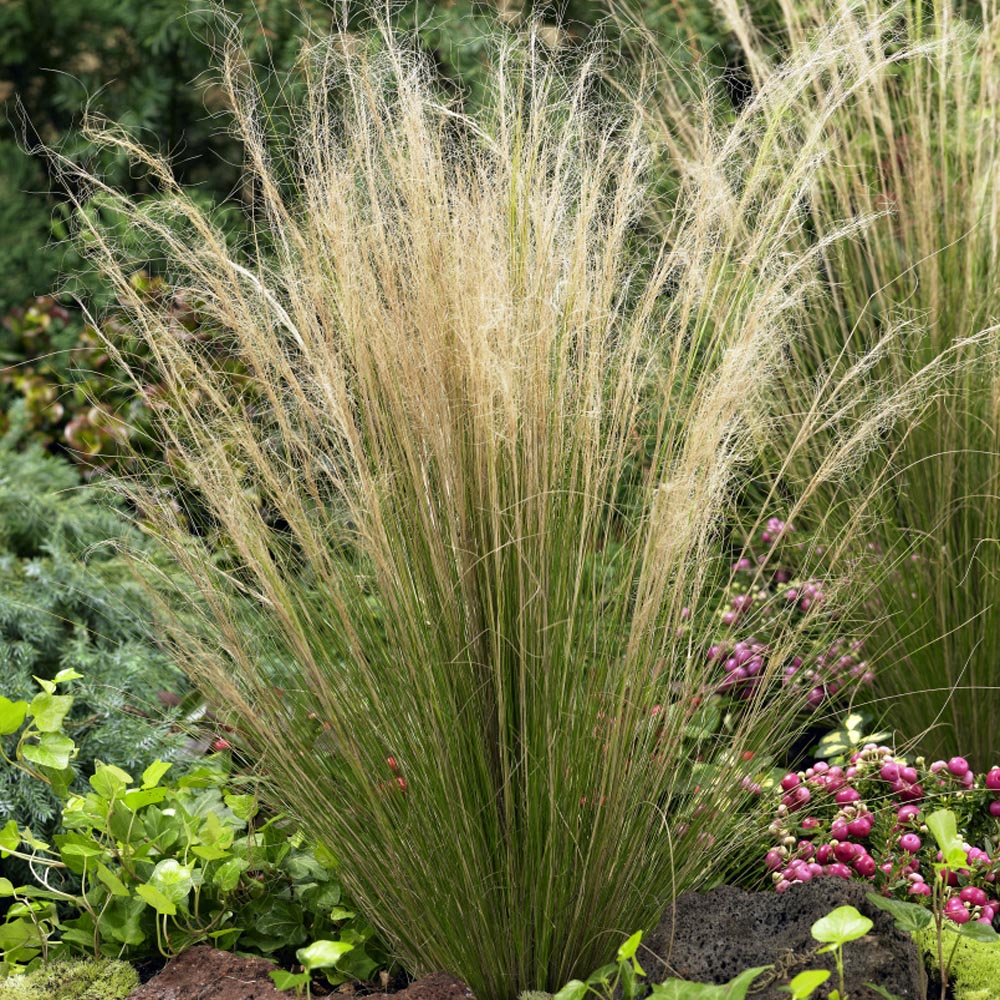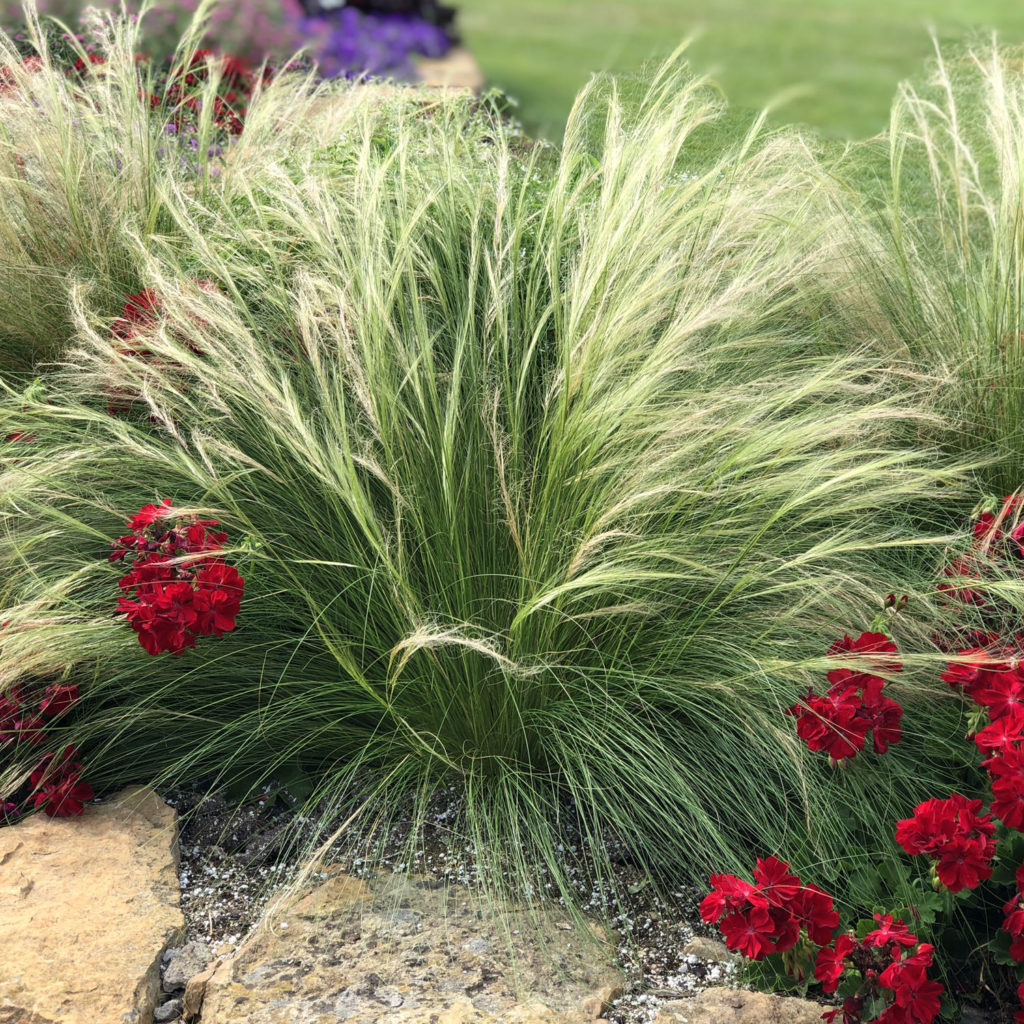Understanding the Unique Needs of Mexican Feather Grass
Mexican feather grass, also known as Nassella tenuissima, is a popular ornamental grass prized for its delicate foliage and feathery plumes. Native to Mexico and parts of the southwestern United States, this grass has become a staple in many gardens and landscapes due to its unique texture and movement in the wind. However, to maintain its beauty and longevity, it is essential to provide proper care for Mexican feather grass. This involves understanding its specific needs and requirements, which can be quite different from those of other plants.
One of the most critical aspects of caring for Mexican feather grass is providing the right environment. This grass thrives in full sun to partial shade, making it an excellent choice for areas with varying levels of sunlight. However, it is crucial to ensure that the soil is well-draining, as Mexican feather grass is susceptible to root rot if the soil is too moist. By understanding these unique needs, gardeners can take the first step in providing the necessary care for Mexican feather grass to flourish.
In addition to its environmental requirements, Mexican feather grass also needs regular maintenance to keep it healthy and looking its best. This includes regular watering, fertilization, and pruning, all of which will be discussed in more detail later in this article. By following these care guidelines, gardeners can enjoy the beauty of Mexican feather grass for years to come. Whether used as a specimen plant or as part of a larger landscape design, Mexican feather grass is sure to add a touch of elegance and sophistication to any garden or outdoor space.
How to Provide Optimal Growing Conditions for Mexican Feather Grass
Providing the right growing conditions is crucial for the health and beauty of Mexican feather grass. This ornamental grass thrives in full sun to partial shade, making it an excellent choice for areas with varying levels of sunlight. However, it is essential to ensure that the soil is well-draining, as Mexican feather grass is susceptible to root rot if the soil is too moist. To achieve optimal drainage, gardeners can add organic matter such as compost or well-rotted manure to the soil.
In addition to proper drainage, Mexican feather grass also requires moderate watering. Overwatering can lead to root rot, while underwatering can cause the grass to become stressed and discolored. To determine the right amount of water, gardeners can perform a simple soil test by inserting their finger into the soil up to the knuckle. If the soil feels dry, it’s time to water. If it’s already moist, it’s best to wait another day or two before watering again.
Soil pH and nutrient levels are also critical factors in providing optimal growing conditions for Mexican feather grass. This grass prefers a slightly acidic to neutral soil pH, ranging from 6.0 to 7.0. To adjust the soil pH, gardeners can add lime to raise the pH or sulfur to lower it. In terms of nutrient levels, Mexican feather grass benefits from regular fertilization, particularly during the growing season. A balanced fertilizer with a ratio of 10-10-10 (nitrogen-phosphorus-potassium) is an excellent choice.
By providing the right growing conditions, including full sun to partial shade, well-draining soil, and moderate watering, gardeners can help Mexican feather grass thrive. Regular soil testing and fertilization can also promote healthy growth and vibrant color. By following these guidelines, gardeners can enjoy the beauty of Mexican feather grass for years to come.
Watering Strategies for Healthy Mexican Feather Grass
Proper watering is essential for the health and beauty of Mexican feather grass. Overwatering can lead to root rot, while underwatering can cause the grass to become stressed and discolored. To determine the right amount of water, gardeners can perform a simple soil test by inserting their finger into the soil up to the knuckle. If the soil feels dry, it’s time to water. If it’s already moist, it’s best to wait another day or two before watering again.
When watering Mexican feather grass, it’s essential to avoid getting water on the leaves or crown of the plant. This can cause the plant to become susceptible to disease and pests. Instead, water at the base of the plant, allowing the soil to absorb the moisture. This will help prevent overwatering and reduce the risk of root rot.
The frequency of watering will depend on the climate and weather conditions. In hot and dry climates, Mexican feather grass may require more frequent watering, while in cooler and more humid climates, it may require less. Gardeners can also use a rain gauge to measure the amount of rainfall and adjust their watering schedule accordingly.
In addition to proper watering techniques, gardeners can also use mulch to help retain moisture in the soil. Organic mulch such as wood chips or bark can help reduce evaporation and prevent weeds from growing. This will not only help conserve water but also reduce the need for frequent watering.
By following these watering strategies, gardeners can help Mexican feather grass thrive. Proper watering techniques, combined with regular fertilization and pruning, will promote healthy growth and vibrant color. With the right care, Mexican feather grass can be a beautiful and low-maintenance addition to any garden or landscape.
Fertilization and Pruning for a Lush Mexican Feather Grass
Fertilization is an essential aspect of caring for Mexican feather grass. This ornamental grass benefits from regular fertilization, which promotes healthy growth and vibrant color. A balanced fertilizer with a ratio of 10-10-10 (nitrogen-phosphorus-potassium) is an excellent choice for Mexican feather grass. Gardeners can apply the fertilizer in the spring and summer months, following the manufacturer’s instructions for application rates and timing.
In addition to fertilization, pruning is also crucial for maintaining the health and beauty of Mexican feather grass. Pruning helps to maintain the grass’s shape, encourages new growth, and removes dead foliage. Gardeners can prune Mexican feather grass in the late winter or early spring, removing any dead or damaged foliage. This will help to promote new growth and prevent the grass from becoming leggy or unkempt.
When pruning Mexican feather grass, gardeners should use sharp, clean pruning tools to prevent spreading diseases. It’s also essential to make clean cuts, just above a node, to promote healthy growth. Gardeners can also use pruning to control the size and shape of the grass, making it an excellent choice for hedges or borders.
Another benefit of pruning Mexican feather grass is that it helps to encourage new growth. By removing dead or damaged foliage, gardeners can stimulate the grass to produce new growth, which will help to maintain its beauty and vibrancy. Regular pruning will also help to prevent the grass from becoming too dense, which can lead to disease and pest issues.
By fertilizing and pruning Mexican feather grass regularly, gardeners can promote healthy growth and vibrant color. These simple care techniques will help to maintain the beauty and longevity of this ornamental grass, making it an excellent choice for any garden or landscape.
Pest and Disease Management for Mexican Feather Grass
Mexican feather grass is generally a low-maintenance ornamental grass, but it can be susceptible to certain pests and diseases. Aphids, whiteflies, and spider mites are common pests that can infest Mexican feather grass, while powdery mildew and rust are common diseases that can affect the grass.
To prevent pest infestations, gardeners can use organic methods such as introducing beneficial insects, such as ladybugs or lacewings, which prey on aphids and other pests. They can also use neem oil or insecticidal soap to control pest populations.
For disease management, gardeners can use integrated pest management (IPM) methods, which involve a combination of cultural, biological, and chemical controls. For example, they can remove infected leaves or stems to prevent the spread of disease, and use fungicides as a last resort.
Regular monitoring is key to preventing pest and disease issues in Mexican feather grass. Gardeners should regularly inspect their plants for signs of pests or diseases, and take action promptly if they notice any problems.
Some common signs of pests or diseases in Mexican feather grass include yellowing or browning leaves, white powdery patches on the leaves, or a sticky substance on the leaves or stems. If gardeners notice any of these signs, they should take action promptly to prevent the problem from spreading.
By using organic and IPM methods, gardeners can effectively manage pests and diseases in Mexican feather grass, and keep their plants healthy and thriving. Regular monitoring and prompt action can help prevent problems from developing, and ensure that the grass remains a beautiful and low-maintenance addition to the garden.
Mulching and Soil Care for a Thriving Mexican Feather Grass
Mulching is an essential aspect of caring for Mexican feather grass. Mulch helps to retain moisture in the soil, suppress weeds, and regulate soil temperature. This can help to promote healthy growth and prevent common problems such as root rot and nutrient deficiencies.
When choosing a mulch for Mexican feather grass, it’s essential to select a material that is well-draining and won’t retain too much water. Organic mulches such as wood chips, bark, or straw are excellent choices. These materials are not only well-draining but also add nutrients to the soil as they break down.
To apply mulch effectively, gardeners should spread a 2-3 inch layer around the base of the Mexican feather grass. This will help to retain moisture and suppress weeds. It’s also essential to keep the mulch a few inches away from the base of the plant to prevent rot and other problems.
In addition to mulching, soil care is also crucial for the health and well-being of Mexican feather grass. This includes regular soil testing to determine the pH and nutrient levels. Based on the test results, gardeners can adjust the soil pH and nutrient levels to ensure optimal growing conditions.
Soil aeration is also essential for Mexican feather grass. This involves loosening the soil to a depth of 6-8 inches to improve drainage and promote healthy root growth. Gardeners can use a fork or spade to aerate the soil, taking care not to damage the roots of the plant.
By mulching and providing proper soil care, gardeners can promote healthy growth and prevent common problems in Mexican feather grass. This will help to ensure that the plant remains a beautiful and thriving addition to the garden.
Dividing and Transplanting Mexican Feather Grass
Dividing and transplanting Mexican feather grass is a great way to propagate new plants and maintain the health and vigor of existing ones. This process involves dividing the roots of the plant into smaller sections, each with its own set of leaves and roots, and then replanting them in a new location.
The best time to divide and transplant Mexican feather grass is in the spring or fall, when the weather is cooler and there is ample moisture in the soil. This will help to reduce stress on the plant and promote healthy growth.
To divide Mexican feather grass, gardeners should start by digging up the entire plant, taking care not to damage the roots. They should then gently separate the roots into smaller sections, making sure each section has its own set of leaves and roots.
Once the roots are divided, gardeners can replant them in a new location, making sure to provide the same growing conditions as the original plant. This includes full sun to partial shade, well-draining soil, and moderate watering.
After transplanting, gardeners should water the new plants regularly, making sure the soil is consistently moist but not waterlogged. They should also provide regular fertilization and pruning to promote healthy growth and prevent common problems.
By dividing and transplanting Mexican feather grass, gardeners can create new plants that will thrive in their garden. This process is also a great way to share plants with friends and family, or to create new plants for other areas of the garden.
Common Mistakes to Avoid When Caring for Mexican Feather Grass
While Mexican feather grass is a relatively low-maintenance ornamental grass, there are some common mistakes to avoid when caring for it. One of the most common mistakes is overwatering, which can lead to root rot and other problems. Underwatering can also be detrimental, as it can cause the grass to become stressed and discolored.
Another common mistake is neglecting to fertilize and prune the grass regularly. Fertilization is essential for promoting healthy growth and vibrant color, while pruning helps to maintain the grass’s shape and encourage new growth.
Not providing enough sunlight is also a common mistake. Mexican feather grass requires full sun to partial shade, so it’s essential to choose a location that receives the right amount of sunlight.
Using the wrong type of mulch or applying it too thickly can also be problematic. Mulch helps to retain moisture and suppress weeds, but it can also cause the soil to become too wet or dry if not applied correctly.
Finally, not monitoring the grass for pests and diseases can lead to serious problems. Regular monitoring can help to identify issues early on, and prevent them from becoming more serious.
By avoiding these common mistakes, gardeners can help to ensure that their Mexican feather grass remains healthy and thriving. By following the guidelines outlined in this article, gardeners can provide the best possible care for their Mexican feather grass and enjoy its beauty for years to come.


/Mexican-feather-grass-big-17e9e1d96e574780bc16a3f06e85dd6a.jpg)




